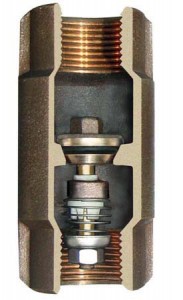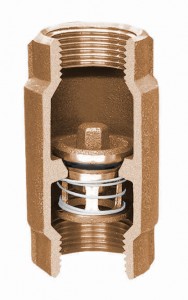The only time a check valve does any work is when the pump shuts off. So if the pump cycles 100 or 300 times per day, the check valve has to work 100 or 300 times per day. With the old pressure tank only method, when the pump is on it is always producing maximum flow. So the check valve is wide open when the pump shuts off. When the pump shuts off the water reverses direction and the check valve slams shut from the wide open position. When the check valve slams shut, it causes water hammer that can create 5 to 10 times more pressure than the max pressure the pump can build. So with a pump that is working at 100 PSI from the bottom of the well, the check valve takes at least a 500 PSI hit every time the pump shuts off. And when cycling 100 times per day, the check valve takes a 500 PSI hit 36,500 times per year. When the pump is cycling 300 times per day, the check valve takes a 500 PSI hit 109,500 times per year. As with my favorite quote from the movie Shaw Shank Redemption, "time and pressure can destroy anything". 500 PSI is a lot of pressure. And 100,000 times a year is a lot of times. This is what makes most check valves fail.
If the pump only cycles 20 times per day, like when using a CSV, the check valve only has to work 20 times per day instead of 300 times per day. Also when using a CSV the pump is only producing 1 GPM at the time the pump shuts off, so the check valve is only open the thickness of a piece of paper. A CSV reduces the number of cycles tremendously. And the CSV causes the check valve to close from a barely open position, completely eliminating the "hit". The CSV creates a "soft stop" that eliminates slamming check valves and the water hammer that accompanies said slamming check valve. The CSV can also create a soft start, which eliminates check valves flying wide open on pump start. Without a soft start, the check valve poppet gets slammed against the stop point with every pump start, which can also cause check valve failures.
Check valves, as with every other component in a pump system normally fail from excessive cycling on and off, as well as hard starts and stops. Reduce or eliminate pump cycling and the check valve and all components in a pump system will last much longer.


